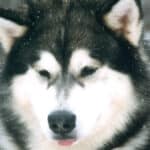Interview with Hound Group Judge Thomas Kirstein
Where do I live? How many years in dogs? How many years as a judge?
Thomas Kirstein: I currently live on a small farm in Bulls Gap, a small town in beautiful East Tennessee. I acquired my first Afghan Hound, a Holly Hill Gold Doubloon daughter, when I was in graduate school during the early 1970s. I was approved as a judge for my initial breeds in 1991. Professionally, I recently retired as executive director of a large mental health agency. Currently, I am pursuing an interest in real estate development.
What is my original breed? What is/was my kennel name?
Thomas Kirstein: My original breed was the Afghan Hound, soon followed by Whippets. Although my first bitch never finished her championship, she introduced me to the world of dog shows where I have remained as an exhibitor, breeder, and judge. I chose “Ripshin” as my kennel name, the name of my family’s farm in North Carolina.
Can I list a few of the notable dogs I’ve bred? Any performance or parent club titles?
Thomas Kirstein: I have bred over thirty Afghan Hound champions. Most notable, perhaps, is CH Ripshin Truffles, who remains one of the top producers in the breed with eleven champion offspring. I have also bred over fifty AKC champion Whippets, including several Group winners, Specialty winners, and an all-breed BIS winner. A co-owned Basenji bitch won BOB at the Basenji National a few years ago.
What are some of the qualities I most admire in the Hound breeds?
Thomas Kirstein: In the Hound breeds, I most admire their independence of thought and spirit, their agility, their stamina, and their gentle nature, as well as their determination and courage.
Have I judged any Hound Breed/Group Specialties?
Thomas Kirstein: I have been honored to judge several Hound Shows and Specialties for Afghan Hounds and Whippets throughout the US, Europe, Canada, and Australia. I have also judged several Borzoi, Saluki, Dachshund, and Beagle Specialties in the States.
Hounds are, first and foremost, hunters. How does this inform my decision-making in the show ring?
Thomas Kirstein: When evaluating a dog, I always keep the breed’s function and purpose in mind. The dog’s balance and fitness, as well as its adherence to the breed’s Standard, play an important role in my decisions.
How important are breed hallmarks in the Sighthounds? In the Scenthounds? In the “Primitive” Hounds?
Thomas Kirstein: Sighthounds must be able to pursue prey with speed and agility. Hallmarks, to me, are length of leg and back, deep chest, and powerful limbs and body. Scenthounds must be physically built for the hunt, possessing large noses, open nostrils, and loose lips.
Would I have any advice to impart to newer judges of the Hound Breeds who come from other Groups?
Thomas Kirstein: Before judging, intimately know the breed’s Standard! At every opportunity, talk to mentors of the breed. Approach each breed with confidence. Above all, don’t be heavy-handed!
In my opinion, how do today’s exhibits compare with the Hounds of the past?
Thomas Kirstein: Breed records in many of the Hound breeds are still long-standing. I, however, think many of the breeds are in excellent shape. I find this is especially true of Whippets, the breed I currently own and show.
When it comes to Group and Best in Show competition, do Hounds have a “leg up” or a liability? (Think Westminster.)
Thomas Kirstein: Not sure. I see many of the Hounds winning the top prizes today!
If I could share my life with only one Hound Breed, which would it be and why?
Thomas Kirstein: Although I dearly loved living with my Afghan Hounds, I now prefer living with the Whippet; mainly because of the grooming. Whippets are affectionate, dignified, and intelligent companions.









